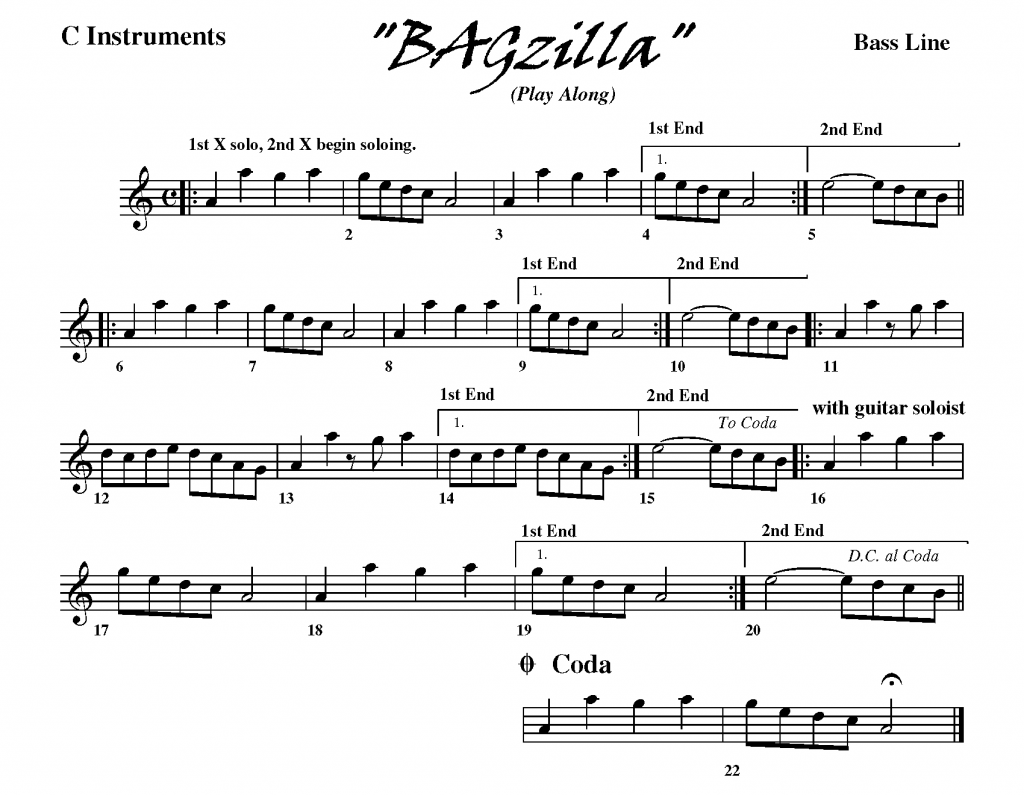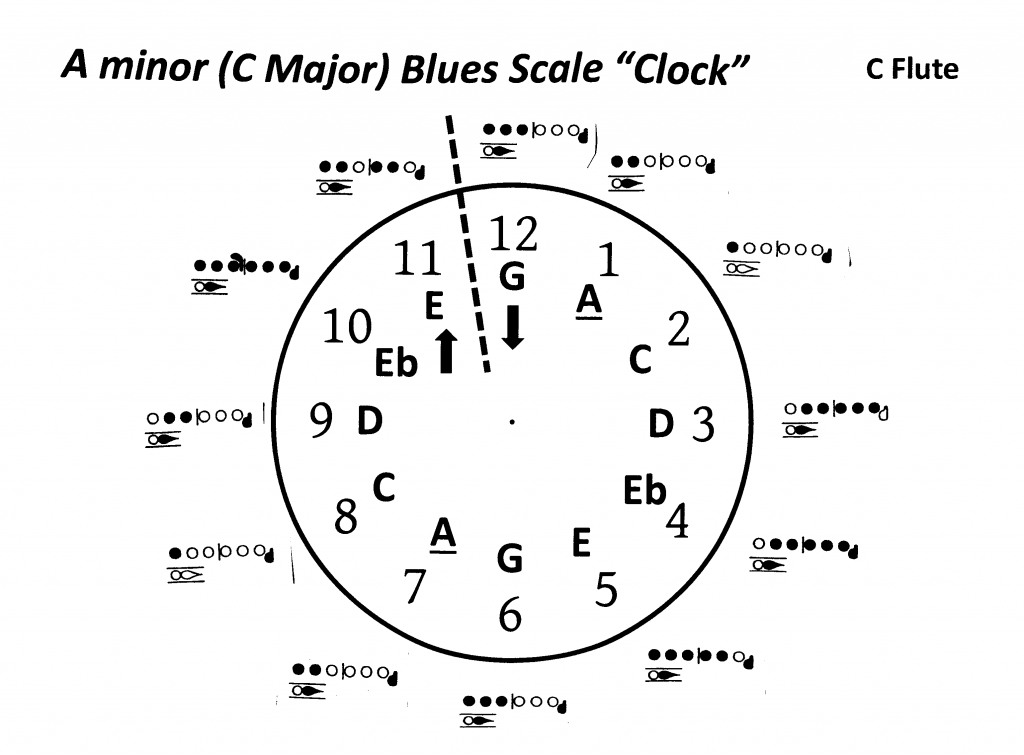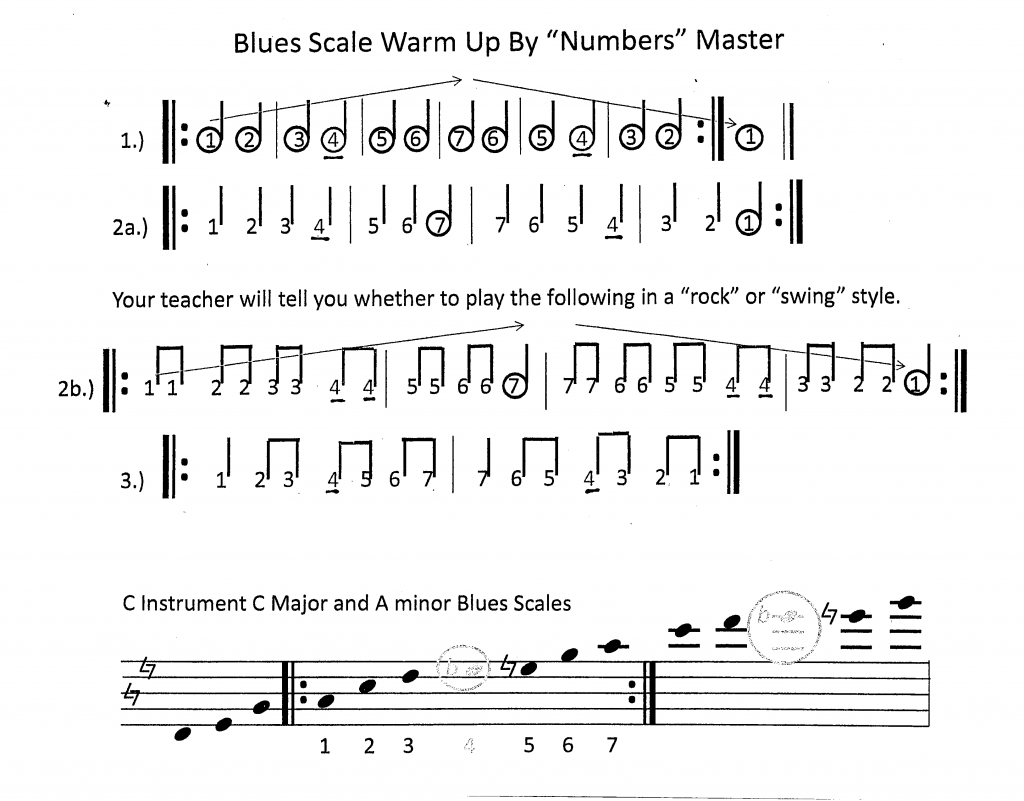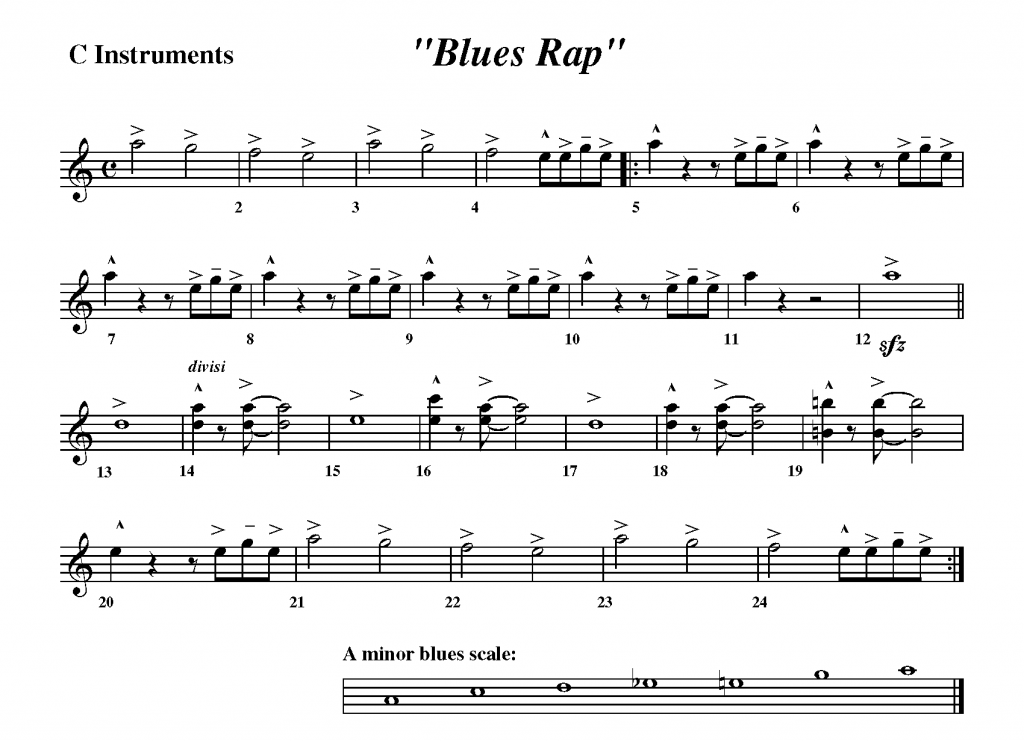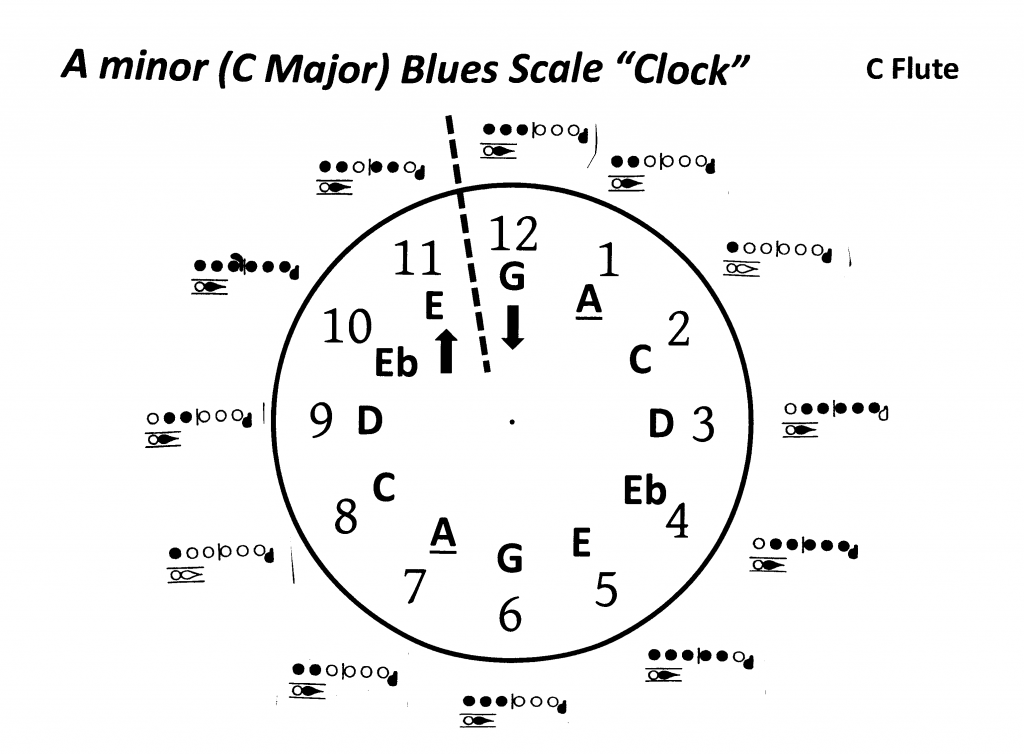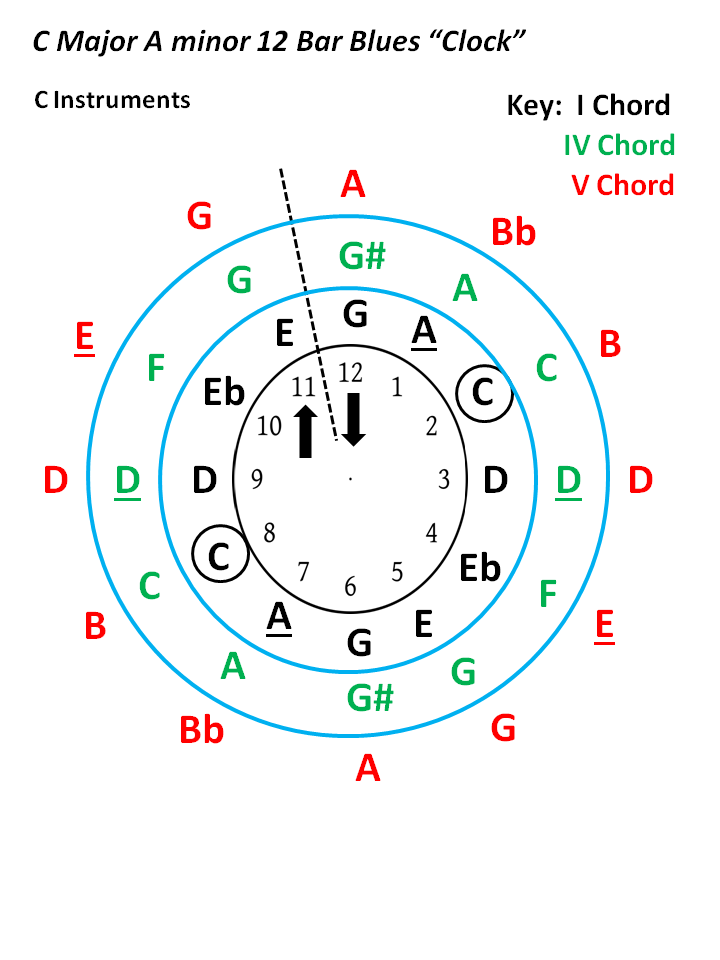Project Title #14: “BAGzilla” A minor Blues Scale:
Instructions: “BAGzilla” was a song originally written for “recorders” for K-8 Magazine. Hence, the capitol letters “BAG” in the beginning of its title. It is written so the performing recorders only needed their first three notes in order to be performed. So far, most of our “blues scale” work has been using the G minor or Bb minor blues scales. Our last assignment was to improvise in the key of Concert “C” Major, so now let’s improvise using that key’s “relative minor, the “A” minor blues scale. It is a straight forward “rock” chart with a fairly repetitious “ostinato” like bass line (remember what ostinato means?). There is an eight bar introduction and then after that, the first soloist can begin to improvise. The bass part is written out in case more than one instrument is participating in the project. In this way, students can take turns soloing, while the others accompany playing the bass part. It is also is designed for a single player to practice improvising after the 8 bar introduction has been completed.
Another “tool” you might want to consider using is the “Blues Scale Warm-Up By ‘Numbers’ Master”. At the bottom, you have an extended “A” minor blues scale written on a staff. The four “warm-up” exercises above it use a number system coinciding sequentially with the seven notes of the blues scale (including the “octave”). Some instrument parts contain one blues scale, while others have two different octaves (depending on the “comfortable” range of each instrument’s transpositions). When performing any of the warm-ups, select which ever octave (if given the choice) you feel most comfortable with.
So far we have stuck with two or three of the “basic rules” for improvisation. We will now begin to slightly “modify” them. The “No Skipping” rule is very important when you first start out, but “BAGzilla” is a great song to begin transitioning with. The “blues note” is always the fourth note of the scale, and is indicated by its grey color and being circled in the blues scale written out at the bottom of the page. In any blues song, the “blues note” actually sounds like it “clashes” with the chord(s) being played. However, (at the same time) it doesn’t, it seems to fit. The blues note creates a very powerful (what I like to call) “special effect” quality or sound. When improvising, if you use the blues note every time you pass it, the note will gradually lose its impact and effectiveness. You will be in danger of the blues note’s use becoming “common place”, or perhaps even “boring” as your solo continues. A correct use of “skipping” would be to pass over the blues note every once in a while. This will allow the fourth step in your blues scale to remain effective when you do decide to use it. Remember to mix things up and, DO NOT BE PREDICTABLE!!! A good example of this (when playing a solo) would be to “mathematically” skip the blues note every other time. The “ear” will quickly pick up on it, and you might negate the very unique and special effect the blues note has on your listener.
Click below for all band parts:
Project Title #15: “Blues Rap” in A minor blues
Instructions: “Blues Rap” comes from a series called “Rap Builders”. There is a short and long version, choose which ever you wish depending on the number of soloists and how long you want it. Play the introduction, as is, from bars 1 through 4. The improvisation solo starts at bar #5 and lasts through to bar #24. Then, you will repeat back to bar 5, playing the improvisation section a total of two (or four) times. If two or three students are working on this project together, you can take turns playing the “solo” section. As one player is performing the solo, the others can play the instrument back ground as written in your part. The “split” measures are for if there is two back up players, or for ease of range (players choice) for an individual player.
Use your C Major / A minor blues clock or blues scale sheet for note reference. If you are not ready for chord changes yet, you could use the original “single” blues scale clock. If you feel you are ready, add the chord changes using the “3 Ring Color Coded Blues Clock” sheet. There is also an abbreviated “A” minor blues scale sketch at the bottom of your instrument’s music page. Note: In “jazz” the section of music between bars 5 and 12 is referred to as “stop time”. You will notice in the recording the rhythm section is in unison with the backup players, leaving a “stoppage of time” (or “gap”) for the soloist to fill in by his or herself.
